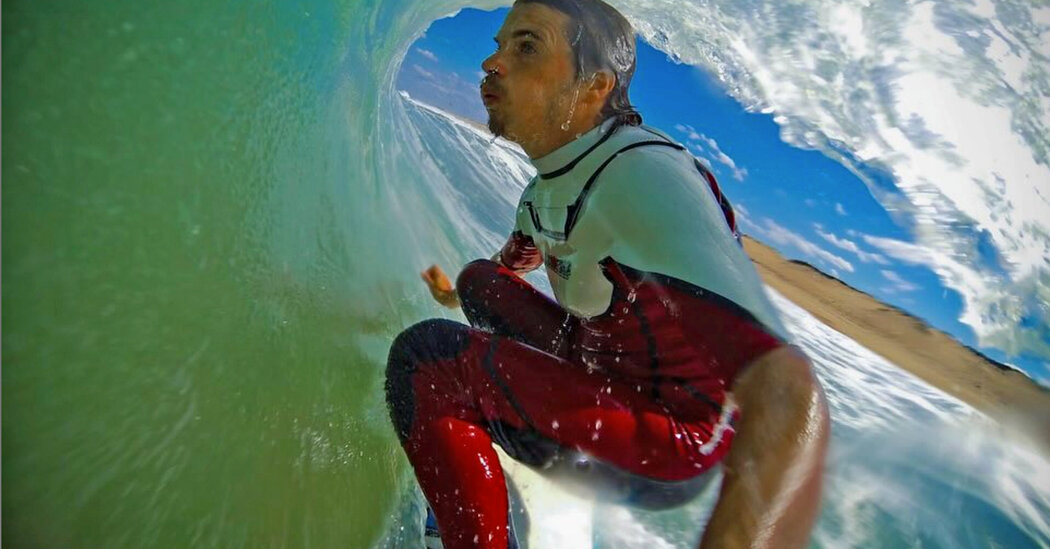
Hugues Oyarzabal, one of Europe’s most accomplished surfers and among the first to record spectacular feats from inside the curl of a wave using digital cameras, died on Feb. 21 at his home in Biarritz, France. He was 39.
His parents, Charles and Lucette Oyarzabal, said he had taken his own life. Friends told The New York Times that Oyarzabal had lived with bipolar disorder from childhood.
“His physical and psychological suffering took its toll,” his parents told The Times through a translator. “He has chosen to leave us, to rediscover the peace and serenity he has been unable to find over the last few years.”
Oyarzabal surfed some of the most challenging waves in the world, from the Basque coasts of northern Spain and southwestern France to Southern Africa and beyond. In his later years, he found what he called “a second home” in Indonesia, spending part of every year there and seeking out spots that had rarely, if ever, been surfed, notably at Desert Point, on Lombok island, east of Bali, and at Uluwatu, on the Bukit Peninsula.
He also made acclaimed surfing documentaries, including “Peace and Left,” a multipart series, its title referring to a “left-hand wave,” one that breaks to the left from a surfer’s perspective.
Oyarzabal began videotaping his surfing exploits in 2001, as a teenager, using a Mini-DV camcorder in a waterproof box attached to his board. He captured images of himself riding through “tubes” or “barrels” — the tunnels of air created inside cresting waves, which the greatest surfers can ride in for hundreds of yards.
We are having trouble retrieving the article content.
Please enable JavaScript in your browser settings.
Thank you for your patience while we verify access. If you are in Reader mode please exit and log into your Times account, or subscribe for all of The Times.
Thank you for your patience while we verify access.
Already a subscriber? Log in.
Want all of The Times? Subscribe.
